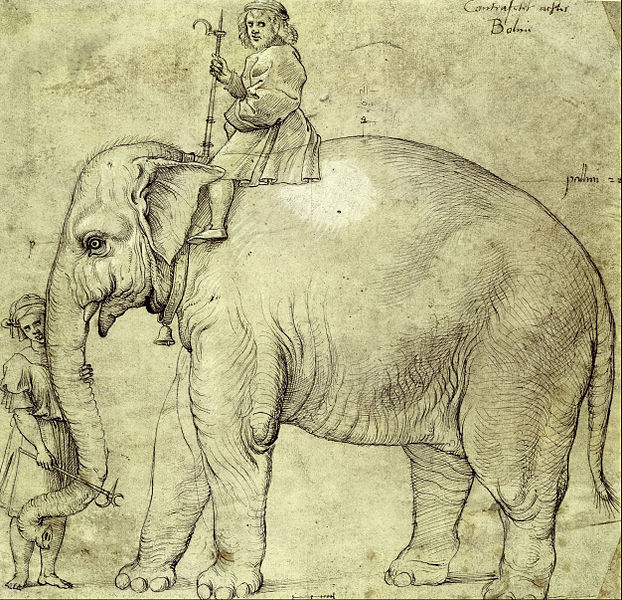In early 16th century Rome, at the height of the Italian Renaissance, when artists such as Raphael, Michelangelo, and Leonardo thrived in the Holy City, the decadent court of Pope Leo X was a place where visitors could find pleasures and entertainment more exotic than anything they had previously imagined. Among the Pope’s great joys was his menagerie of exotic animals, and the prize of his collection was an Indian elephant named Hanno, presented to him by the King of Portugal. This elephant – trained to kneel, dance, weep, and trumpet on command – led parades and entertained at public festivals and was commemorated in paintings, poetry, and sculpture. For Romans, Hanno became the preeminent symbol of the alluring Orient; for Pope Leo’s detractors, the elephant became a symbol of Roman corruption.
Hanno
